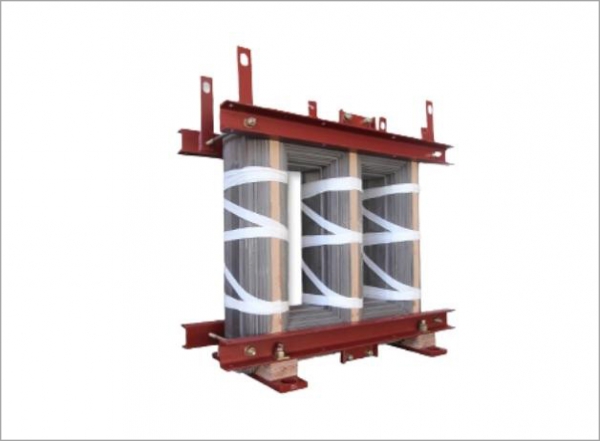In the power system, the oil-immersed transformer is a key electrical device used to achieve power conversion between different voltage levels. In the internal structure of the transformer, the iron core is one of the core components that determine its performance, efficiency and stability.
1. The basic function of the iron core
The main function of the oil-immersed transformer tore is to transfer power between the primary winding and the secondary winding through the principle of electromagnetic induction. The iron core is the key medium in this energy conversion process.
1. Provide a magnetic flux path
The primary function of the iron core is to provide a low magnetic resistance channel for the magnetic flux of the transformer. When the current flows through the primary winding, an alternating magnetic field is generated, and these magnetic fluxes flow through the iron core and induce voltage in the secondary winding. The existence of the iron core greatly enhances the magnetic coupling efficiency.
2. Reduce energy loss
Compared with air, the magnetic permeability of the iron core material (such as cold-rolled silicon steel sheet) is much higher, which can effectively concentrate the magnetic flux and reduce the leakage magnetic phenomenon, thereby significantly reducing energy loss and improving the efficiency of the transformer.
3. Support structure stability
The iron core is not only a magnetic flux path, but also a mechanical support structure for the entire winding. It can withstand the electromagnetic force during short circuit and maintain the stability of the internal structure of the transformer.

2. Material and structure of the iron core
1. Material selection
The iron core is usually made of **cold-rolled oriented silicon steel sheets (CRGO)** with high magnetic permeability and low loss. Silicon steel contains 2% to 3% silicon, which can significantly increase the magnetic permeability and reduce eddy current loss.
2. Lamination structure (Lamination)
In order to reduce eddy current loss (Eddy Current Loss), the iron core is not a whole block, but is composed of layers of thin sheets separated by insulating paint. The typical thickness is 0.23mm or 0.27mm.
3. Structural form
Common iron core forms of oil-immersed transformers are:
Core structure (Core Type): The winding surrounds the iron core;
Shell structure (Shell Type): The iron core surrounds the winding;
Three-phase three-column structure: commonly used in three-phase transformers to reduce material consumption and energy consumption.
3. Electromagnetic properties of iron core and transformer efficiency
The quality of iron core directly affects the performance of transformer, especially in the following aspects:
1. Core loss
It includes hysteresis loss and eddy current loss, which are the main sources of loss when the transformer is unloaded. High-quality silicon steel sheets can greatly reduce this part of loss.
2. Magnetic flux saturation problem
The iron core has a certain magnetic flux carrying limit. When this limit is exceeded (i.e. magnetic saturation), the induced voltage will no longer change linearly, and will cause heat rise and electrical failure. Therefore, a reasonable magnetic flux density (generally controlled at 1.5~1.7 T) should be considered during design.
3. Leakage magnetic control
Leakage magnetic flux will lead to reduced induction efficiency, local overheating and even interference with surrounding equipment. Optimizing the shape of the iron core and the arrangement of the windings can help reduce the impact of leakage magnetic flux.
4. Collaborative work of iron core and oil-immersed cooling system
In oil-immersed transformers, transformer oil plays both an insulating role and is used to cool heat-generating components. The iron core will generate a lot of heat due to frequent magnetic flux changes, so transformer oil is needed to take the heat away.
Oil flows through the gap of the core, effectively taking away the heat;
Improve cooling efficiency through forced oil circulation system;
Ensure full contact and insulation between the core and the oil insulation material.
5. Key technologies in core manufacturing
1. Cutting and stacking technology
The core pieces need to be cut accurately to ensure geometric consistency. The stacking process uses technologies such as "step lap" and "staggered stacking" to effectively reduce magnetic resistance and gaps.
2. Anti-noise design
The core will generate noise due to the magnetostrictive effect under high-frequency alternating magnetic fields, which is called "buzzing". To reduce noise, it is necessary to:
Strictly control the gap between the cores;
Use anti-vibration structure and oil pads;
Use "full bevel joints" or "45° overlap" to reduce vibration.
6. Common faults and maintenance points
During long-term operation, the iron core may have the following problems:
Local overheating: may be caused by poor contact or short circuit of the iron core;
Loose iron core: causes increased noise, and the bracket needs to be tightened;
Partial discharge or breakdown: usually caused by insulation failure or oil pollution.
Preventive measures include:
Regular infrared temperature measurement to check the temperature distribution of the iron core;
Oil quality analysis to ensure insulation strength;
Online partial discharge detection to grasp the operating status.
As the core component of the oil-immersed transformer, the iron core has more functions than just "magnetic conduction". It plays multiple roles such as conducting magnetic flux, reducing losses, supporting structures, and improving stability. It is a key factor in determining the performance, life and safety of the transformer. As the power system develops towards high voltage, large capacity, energy saving and environmental protection, the iron core material and design are also constantly evolving, providing a solid foundation for the efficient operation of the transformer.
 +86-523 8891 6699
+86-523 8891 6699  +86-523 8891 8266
+86-523 8891 8266  info@tl-core.com
info@tl-core.com  No.1, Third Industrial Park, Liangxu Street, Taizhou City, Jiangsu, China
No.1, Third Industrial Park, Liangxu Street, Taizhou City, Jiangsu, China 

 English
English Español
Español Türk
Türk 中文简体
中文简体